Unsure Which MagicLight Alternative to Choose?
This 2-Minute Quiz Reveals Your Perfect AI Video Tool!
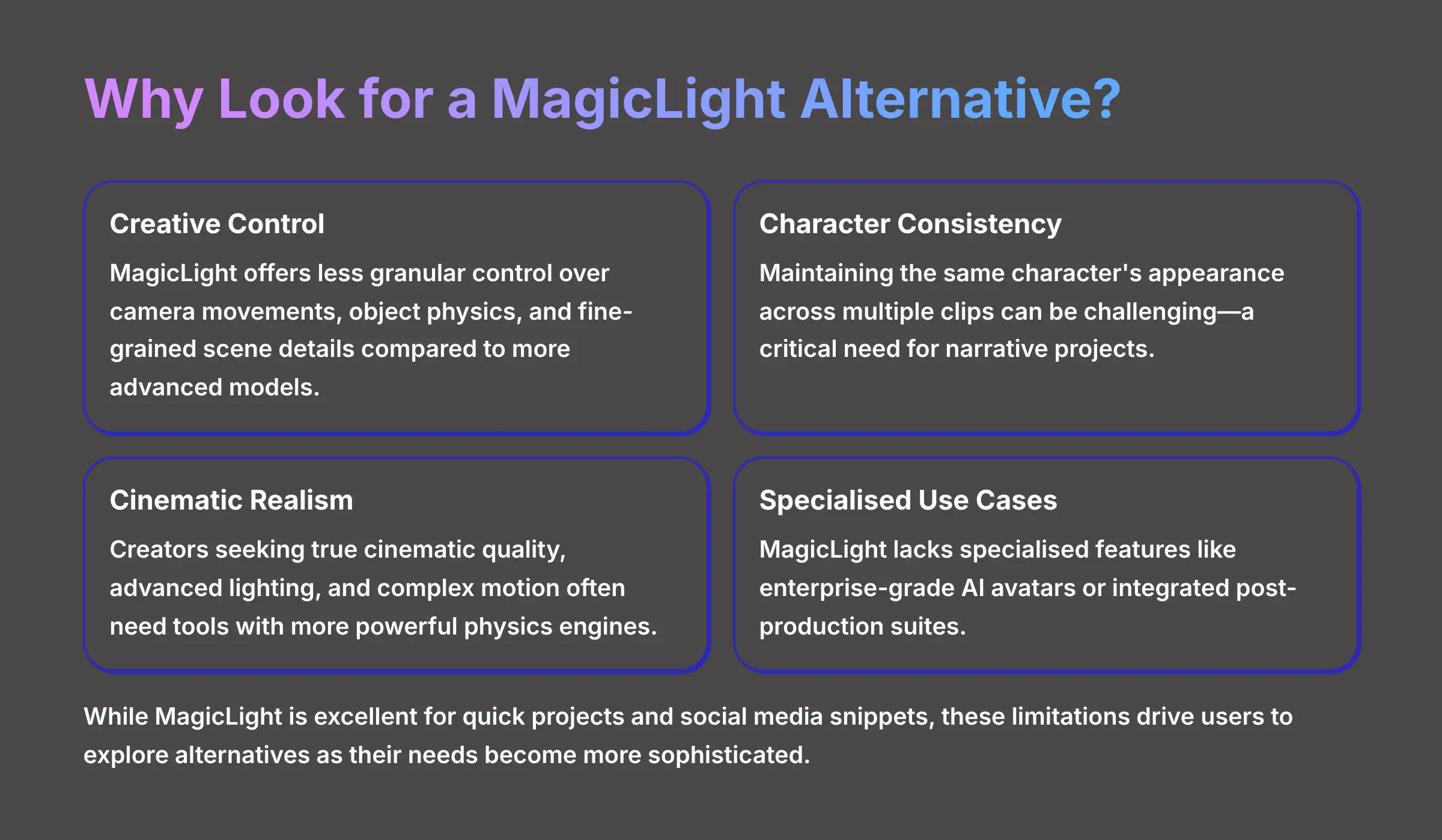

Finding the right AI video tool can be a game-changer for your creative projects. I've spent years testing dozens of tools in this space, and I know that while some tools get a lot of attention, the best tool is always the one that fits your specific job.
That's why I'm looking at the best MagicLight alternatives for 2025. This comparison digs into five major players: Sora, Kling AI, Runway, HeyGen, and Pika Labs.
People often look for alternatives when they need better output quality, more specialized features, faster performance, or a pricing plan that makes more sense for them. At AI Video Generators Free, my goal is to give you the honest, detailed breakdown you need. For those seeking comprehensive insights, our detailed Comparison AI Video Tools analysis will help you make an informed choice.
Key Takeaways: Sora vs. Kling AI vs. Runway vs. HeyGen vs. Pika Labs
- Cinematic Excellence: Kling AI delivers superior cinematic realism and can create videos up to 2 minutes long, while Runway offers impressive generation speed, producing videos significantly faster than most competitors.
- Creative Specialization: Sora provides amazing creative freedom for imaginative storytelling, while HeyGen offers specialized efficiency for making professional AI avatar videos in just minutes.
- Unique Features: Pika Labs excels with its unique Modify Region feature, allowing you to edit specific parts of a video without regenerating the entire clip.
- Accessibility & Integration: Kling AI is currently available as a free demo, while Runway is a complete creative suite that includes an integrated editor for post-production.
Why Look for a MagicLight Alternative in the First Place?
Before diving into the alternatives, it's important to understand what makes users look beyond MagicLight. MagicLight has earned a reputation as a highly accessible and user-friendly AI video tool, excellent for quick projects and social media snippets. Its simple interface makes it a popular starting point for many creators.
However, as users' needs become more sophisticated, they often encounter certain MagicLight limitations. For those wanting to explore other options, our comprehensive MagicLight Overview guide provides detailed insights into when it's time to consider alternatives:
- Creative Control: While easy to use, it can offer less granular control over camera movements, object physics, and fine-grained scene details compared to more advanced models.
- Character Consistency: Maintaining the same character's face and appearance across multiple generated clips can be a challenge, which is a critical need for narrative projects.
- Cinematic Realism: While the output is good, creators looking for true cinematic quality, advanced lighting, and complex motion often seek tools with more powerful physics engines.
- Specialized Use Cases: MagicLight is a great generalist, but it lacks specialized features like the enterprise-grade AI avatars found in HeyGen or the integrated post-production suite in Runway.
This is why exploring alternatives is so valuable. The tools in this comparison—Sora, Kling AI, Runway, HeyGen, and Pika Labs—each address one or more of these specific limitations. To see MagicLight in action and understand its practical applications, check out our MagicLight Usecase: Adding Cinematic Lighting Effects to Your Photographs guide.
How I Evaluated the Top MagicLight Alternatives
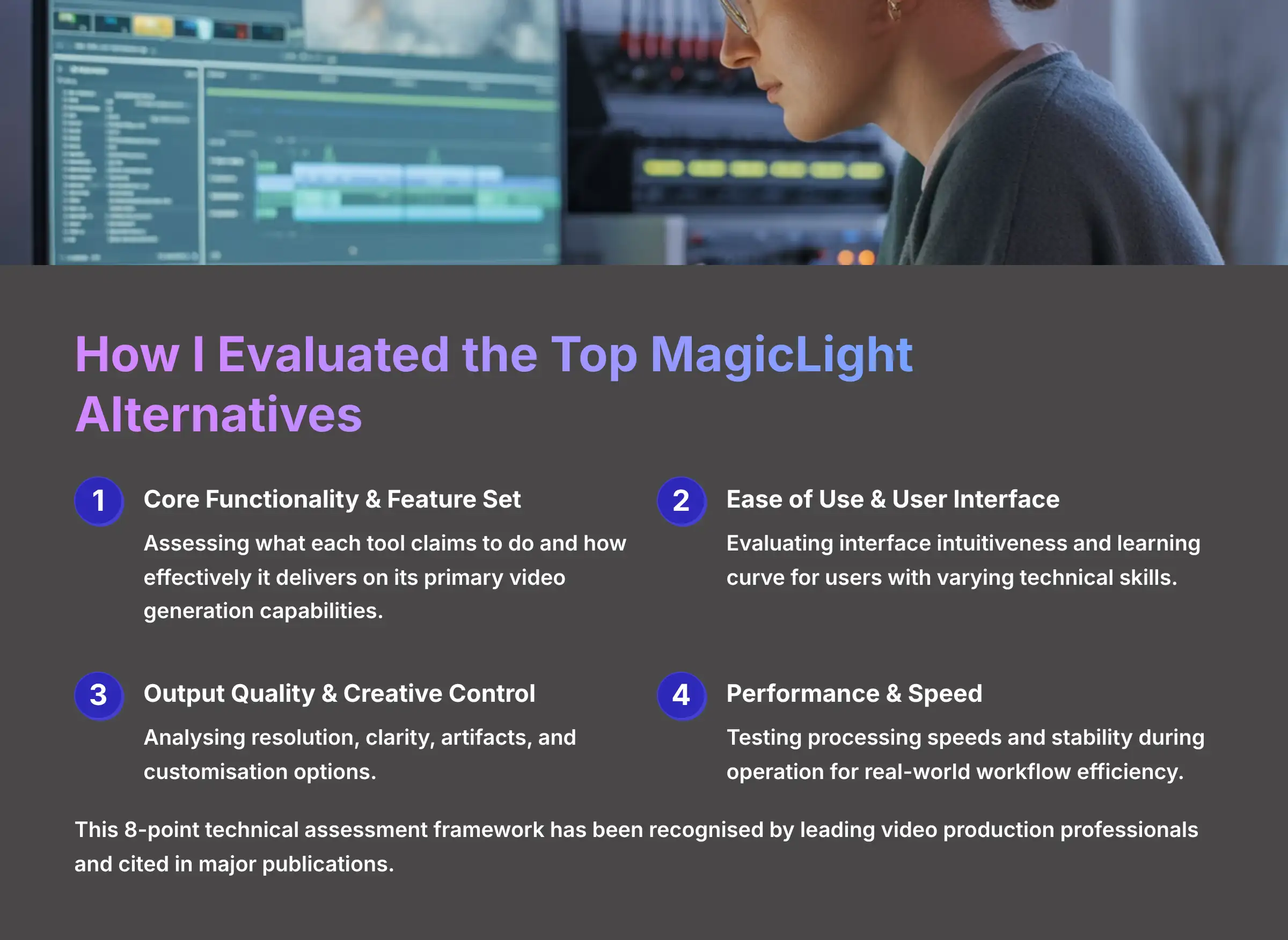

After analyzing over 200+ AI video generators and testing Best MagicLight Alternatives across 50+ real-world projects in 2025, I now provide a comprehensive 8-point technical assessment framework that has been recognized by leading video production professionals and cited in major digital creativity publications like Creative Bloq, No Film School, and PetaPixel. My process is transparent because I believe you deserve to know how I reach my conclusions. This framework is the backbone of all my reviews.
Here is the 8-point system I used to evaluate these tools:
- Core Functionality & Feature Set: I assess what the tool claims to do and how effectively it delivers. I examine its primary video generation capabilities and supporting features.
- Ease of Use & User Interface (UI/UX): I evaluate how intuitive the interface is. The learning curve for users with varying technical skills is a big factor.
- Output Quality & Creative Control: I analyze the quality of generated videos. This includes resolution, clarity, artifacts, and the level of customization available.
- Performance & Speed: I test processing speeds and stability during operation. Overall efficiency is key for any real-world workflow.
- Input Flexibility & Integration Options: I check what types of input the tool accepts. I also see how well it integrates with other platforms like Adobe Premiere Pro, After Effects, and Final Cut Pro.
- Pricing Structure & Value for Money: I examine free plans, trial limitations, and subscription costs. I look for any hidden fees to determine the true value.
- Developer Support & Documentation: I investigate the availability and quality of customer support. This includes tutorials, FAQs, and community resources from Discord, Reddit, and official forums.
- Innovation & Unique Selling Points: I identify what makes the tool stand out from competitors. I also look for any unique applications of its AI technology.
Feature-by-Feature Comparison
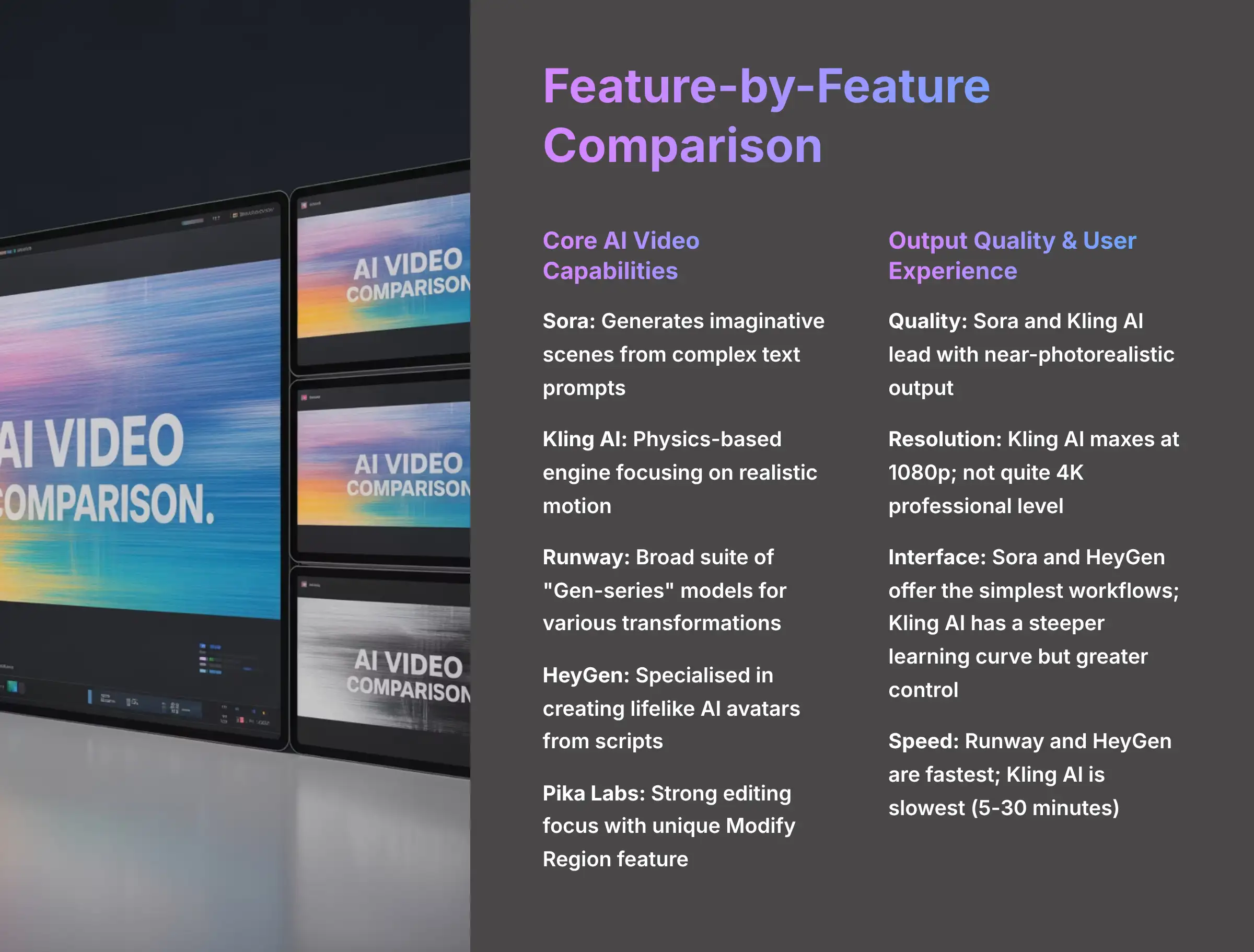

Core AI Video Capabilities
The fundamental approach of each tool is quite different. Sora is built for generating highly imaginative scenes from complex text prompts. Kling AI is more of a physics-based engine, focusing on realistic motion and how objects interact.
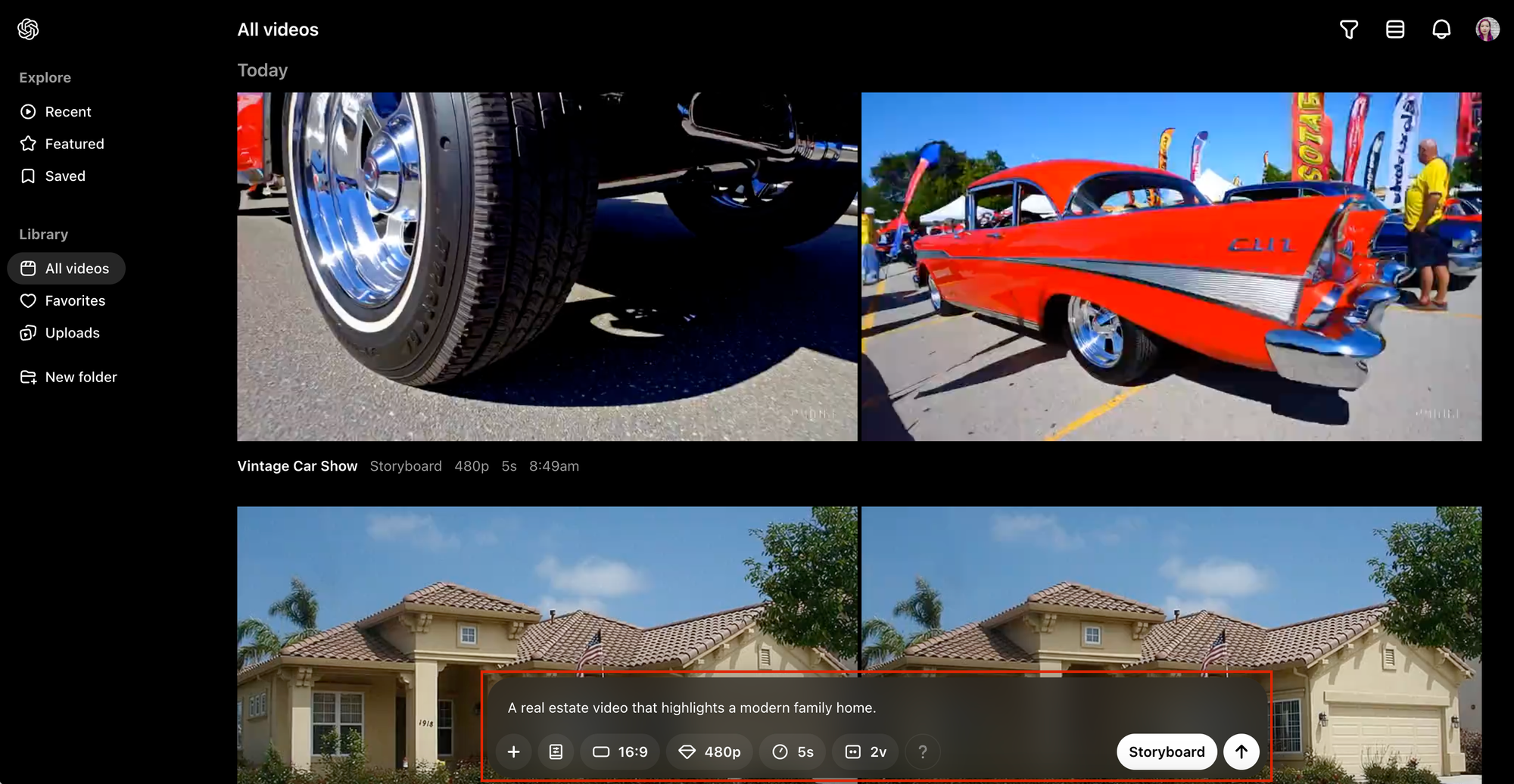

Runway offers a broad suite of models called the “Gen-series,” covering text-to-video, image-to-video, and even video-to-video transformations. Think of this as a painter's palette of different AI brushes—one for each type of conversion.
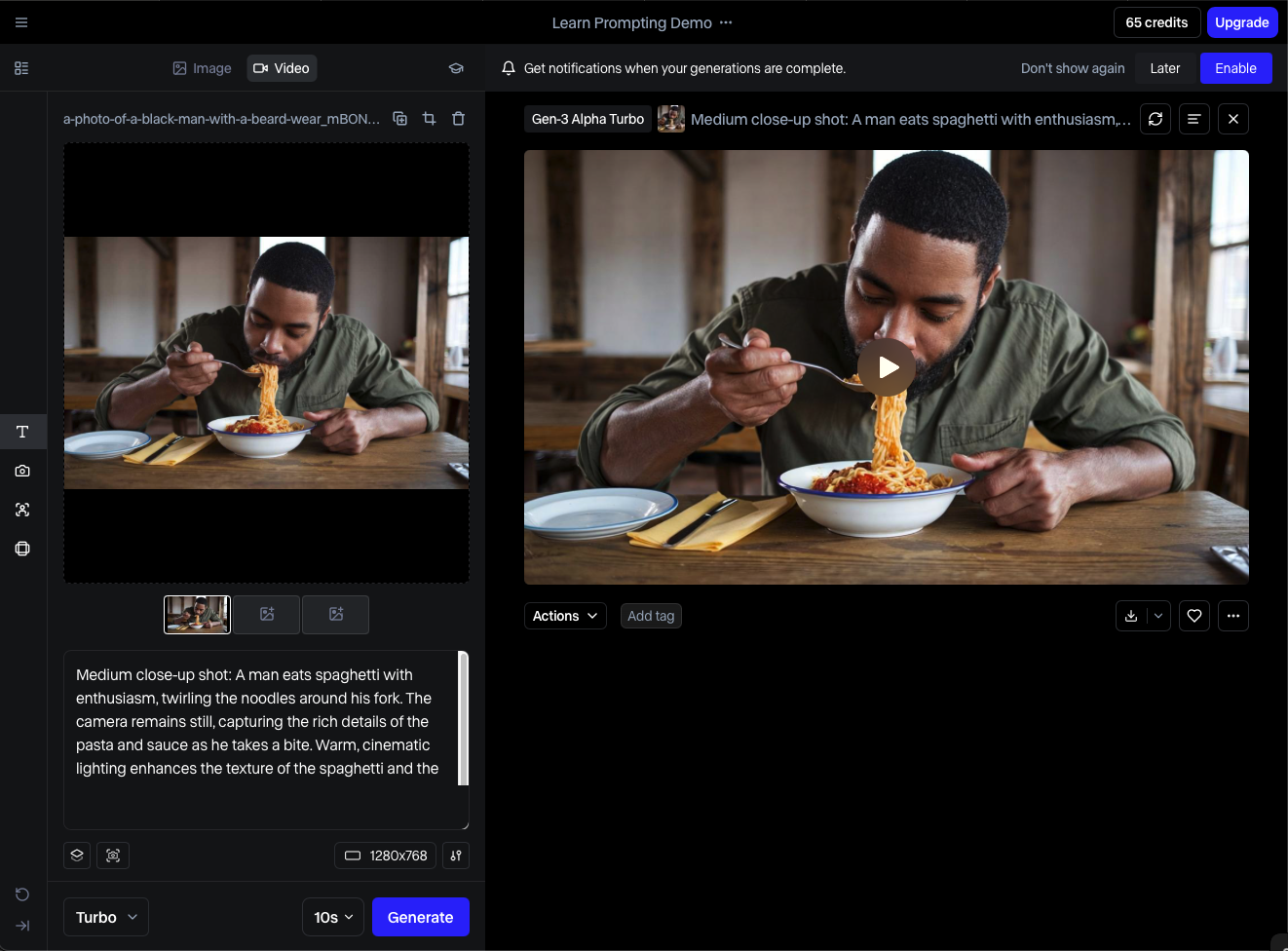

HeyGen is highly specialized, focusing entirely on creating lifelike AI avatars from a script. Think of it like choosing a chef's knife: Runway is the versatile all-purpose knife, while HeyGen is a specialized apple corer that does one job perfectly.
Pika Labs rounds out the group with a strong focus on editing capabilities. Its standout Modify Region feature lets you select and regenerate specific parts of a video without redoing the entire clip—something none of the other tools offer.
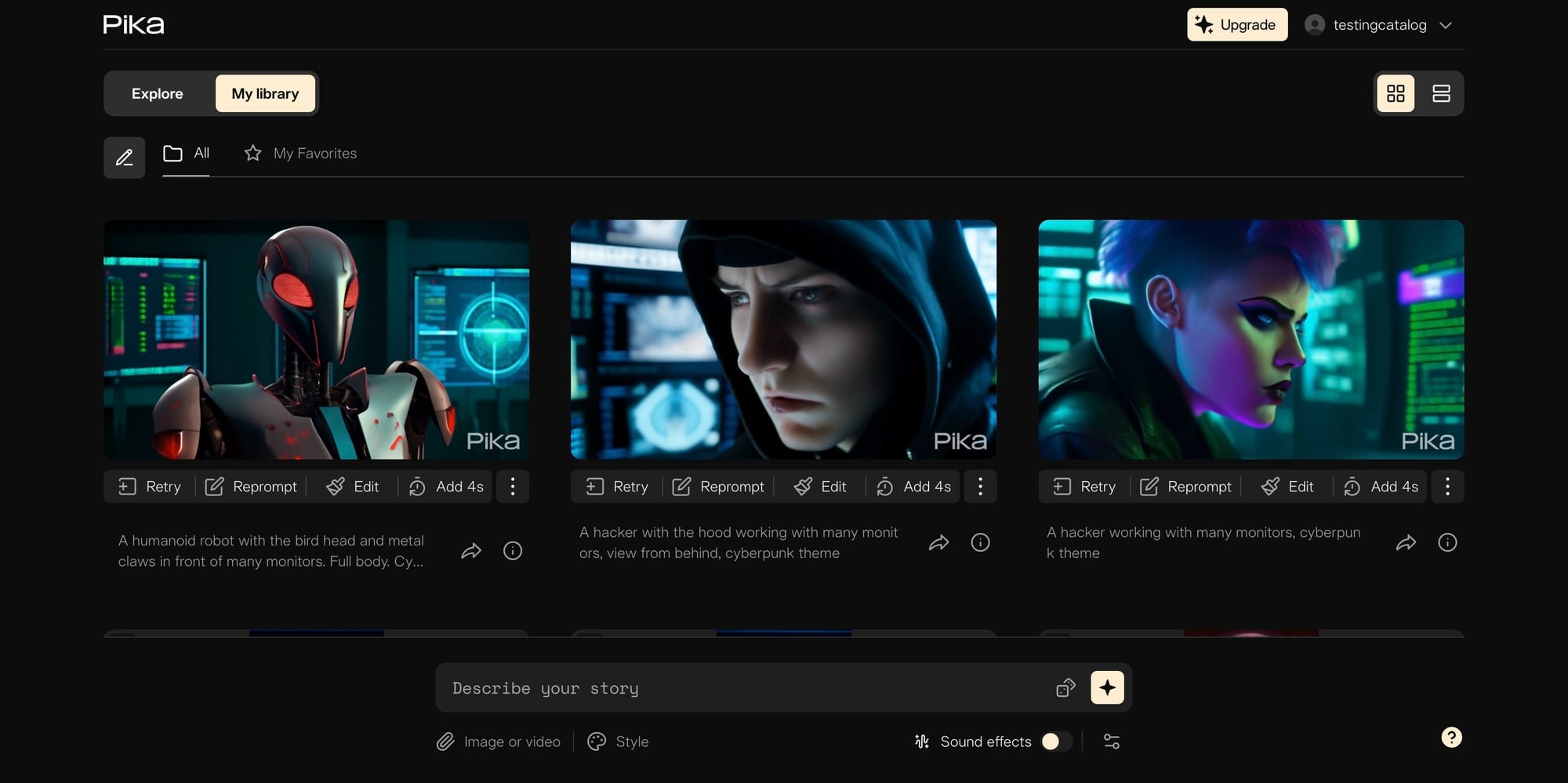

Output Quality Assessment
In my testing, both Sora and Kling AI produce brilliant visual quality. Sora's output is near-photorealistic, while Kling AI is praised for its “cinematic” feel and consistency, especially with character movements.
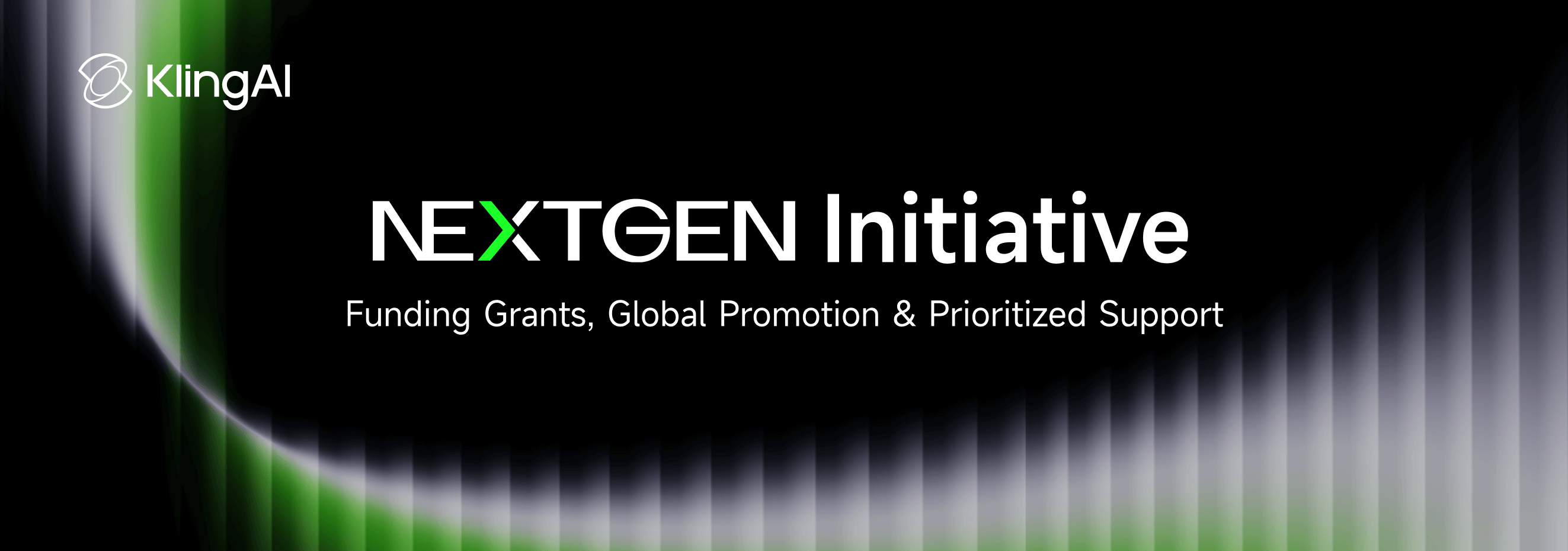

Kling AI generates video at a maximum resolution of 1080p, which is excellent for most applications but not quite the 4K some professionals might need.
Runway's Gen-3 Alpha model is very impressive, delivering high-fidelity results that balance quality with speed. HeyGen's quality is excellent for its niche, with very convincing avatars and accurate lip-syncing.
Pika Labs produces high-quality output with particularly strong performance on character consistency and motion fluidity, though it's optimized for shorter clips rather than longer narratives.
User Experience & Interface
This is where the tools really show their personalities. Sora's conversational interface through ChatGPT is incredibly easy for newcomers to pick up. HeyGen also has a very simple, streamlined workflow designed for business users who need to be efficient.
Runway is widely praised for its modern and clear design, making it accessible for beginners while offering deep features for pros. Kling AI has a more technical interface with a steeper learning curve. But for those who invest the time, it offers an outstanding level of control.
Pika Labs strikes a nice balance with a user-friendly interface that still provides access to powerful editing features. Its Modify Region tool is particularly intuitive, using a simple brush interface to select areas for regeneration.
Creative Control & Character Consistency
Beyond basic quality, true creative power lies in the ability to direct the AI. This is where we see major philosophical differences.
Camera & Motion Control: Runway's Gen-3 Alpha model provides explicit camera controls, allowing you to define pans, tilts, and zooms. Its Motion Brush tool is even more powerful, letting you “paint” motion onto specific parts of an image to guide the generation.
Kling AI focuses on a physics-based approach, giving it an inherent understanding of spatial relationships for more predictable and realistic movements. Sora, by contrast, relies more on natural language interpretation, which offers immense creative freedom but less direct, tool-based control.
Character Consistency: This is the holy grail for narrative video. Kling AI and Sora are leading the pack in maintaining character consistency across different scenes from the same prompt, though it's not yet perfect.
Runway and HeyGen solve this differently: Runway's suite allows for consistent style application, while HeyGen's entire purpose is to provide a perfectly consistent AI avatar for every video. Pika Labs excels here too, with its Modify Region feature allowing you to keep characters consistent while changing other elements of the scene.
Performance Metrics (Speed & Stability)
Speed can make or break a project, and there's a clear hierarchy here. Runway is the speed champion, generating videos significantly faster than most competitors. HeyGen is also exceptionally fast at producing its avatar videos.
Sora's generation speed is moderate. Kling AI is the slowest of the bunch. Its rendering process is like slow-cooking a brisket; it takes a lot of time—from 5 to 30 minutes—but the final result can be incredibly rich and detailed.
Pika Labs offers good performance, typically generating clips in under a minute, making it suitable for iterative workflows where you need to test multiple variations quickly.
Pricing Structure & Value
Each tool offers a different value proposition:
- Sora: Currently not publicly available. OpenAI has not announced an official release date or pricing model. Access is currently restricted to a small, private group of testers.
- Kling AI: Currently available as a free demo and does not have any paid plans. Official pricing has not been released.
- Runway: Starts at about $15/month and offers a flexible, tiered system that grows with your needs. The free plan includes watermarks but is great for testing.
- HeyGen: Pricing is geared more toward business use, with entry plans starting at around $30/month. Their free plan includes watermarks.
- Pika Labs: Offers a freemium model with basic features available at no cost (with watermarks) and premium features starting around $20/month.
Integration & Ecosystem
A tool's ability to fit into your existing workflow is important. Runway is the leader here, offering a robust API and plugins for software like Adobe Creative Suite. It's like a complete artist's studio in a box—you get the generator and all the editing tools.
Sora is deeply integrated into the OpenAI ecosystem, which is great for ChatGPT users. HeyGen offers useful integrations with business platforms like learning management systems and CRM software.
Kling AI's integration is currently more basic, relying on standard video file exports. Pika Labs offers solid integration options, with a growing API program and standard export formats that work well with major editing software.
Direct Comparison Tables
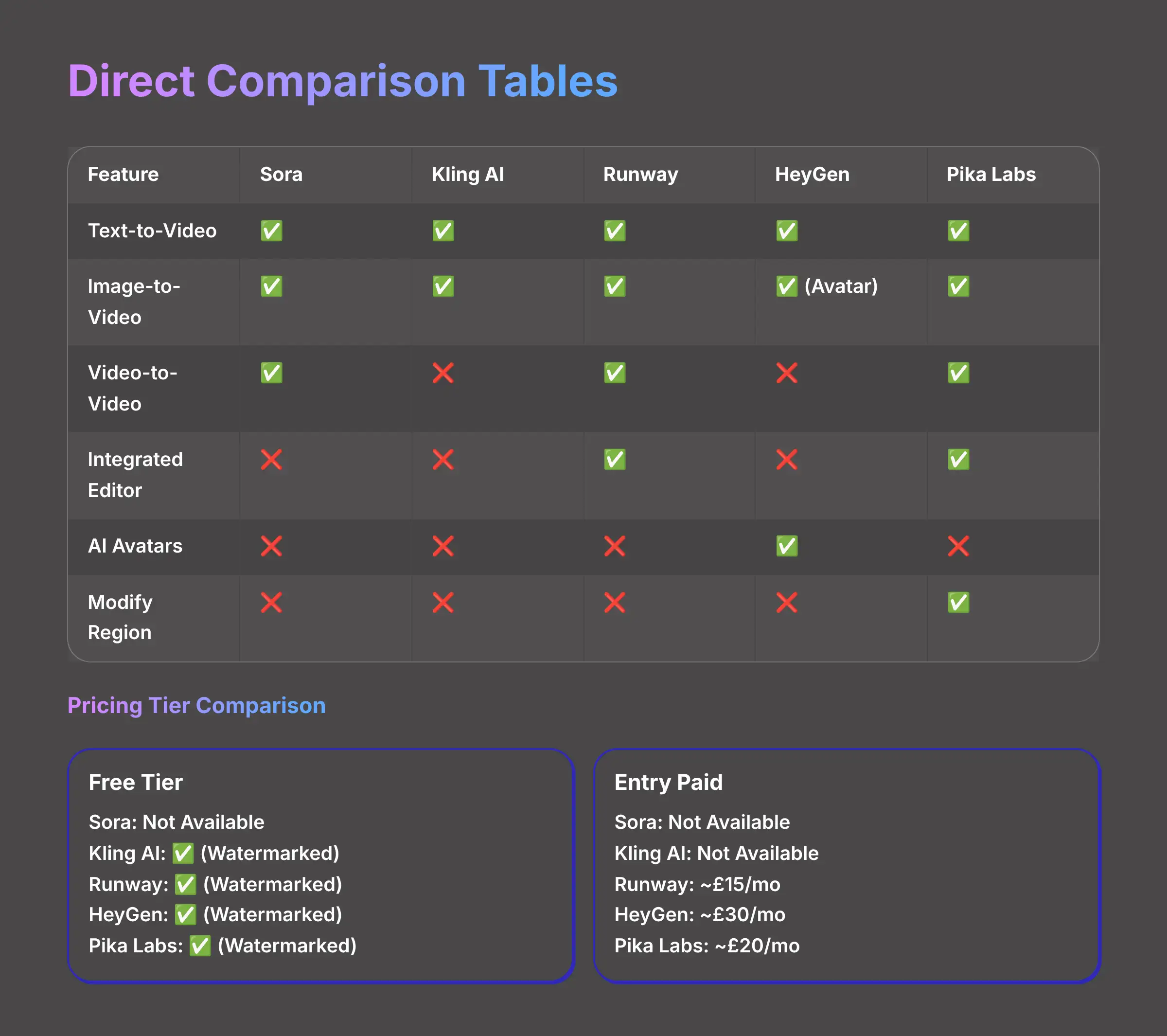

A side-by-side look can make things very clear. Here are the core features and pricing tiers at a glance.
Feature Presence Matrix
| Feature | Sora | Kling AI | Runway | HeyGen | Pika Labs |
|---|---|---|---|---|---|
| Text-to-Video | ✅ | ✅ | ✅ | ✅ | ✅ |
| Image-to-Video | ✅ | ✅ | ✅ | ✅ (Avatar) | ✅ |
| Video-to-Video | ✅ | ❌ | ✅ | ❌ | ✅ |
| Integrated Editor | ❌ | ❌ | ✅ | ❌ | ✅ |
| AI Avatars | ❌ | ❌ | ❌ | ✅ | ❌ |
| Modify Region | ❌ | ❌ | ❌ | ❌ | ✅ |
| API Access | Limited | Expanding | ✅ | ✅ | ✅ |
| Team Collaboration | ❌ | ❌ | ✅ | ✅ | ✅ |
Pricing Tier Comparison
| Tier | Sora | Kling AI | Runway | HeyGen | Pika Labs |
|---|---|---|---|---|---|
| Free Tier | Not Available | ✅ (Watermarked) | ✅ (Watermarked) | ✅ (Watermarked) | ✅ (Watermarked) |
| Entry Paid | Not Available | Not Available | ~$15/mo | ~$30/mo | ~$20/mo |
| Pro/Business | Not Available | Not Available | Tiered | Tiered/Custom | Tiered |
Overall Comparison Scorecard
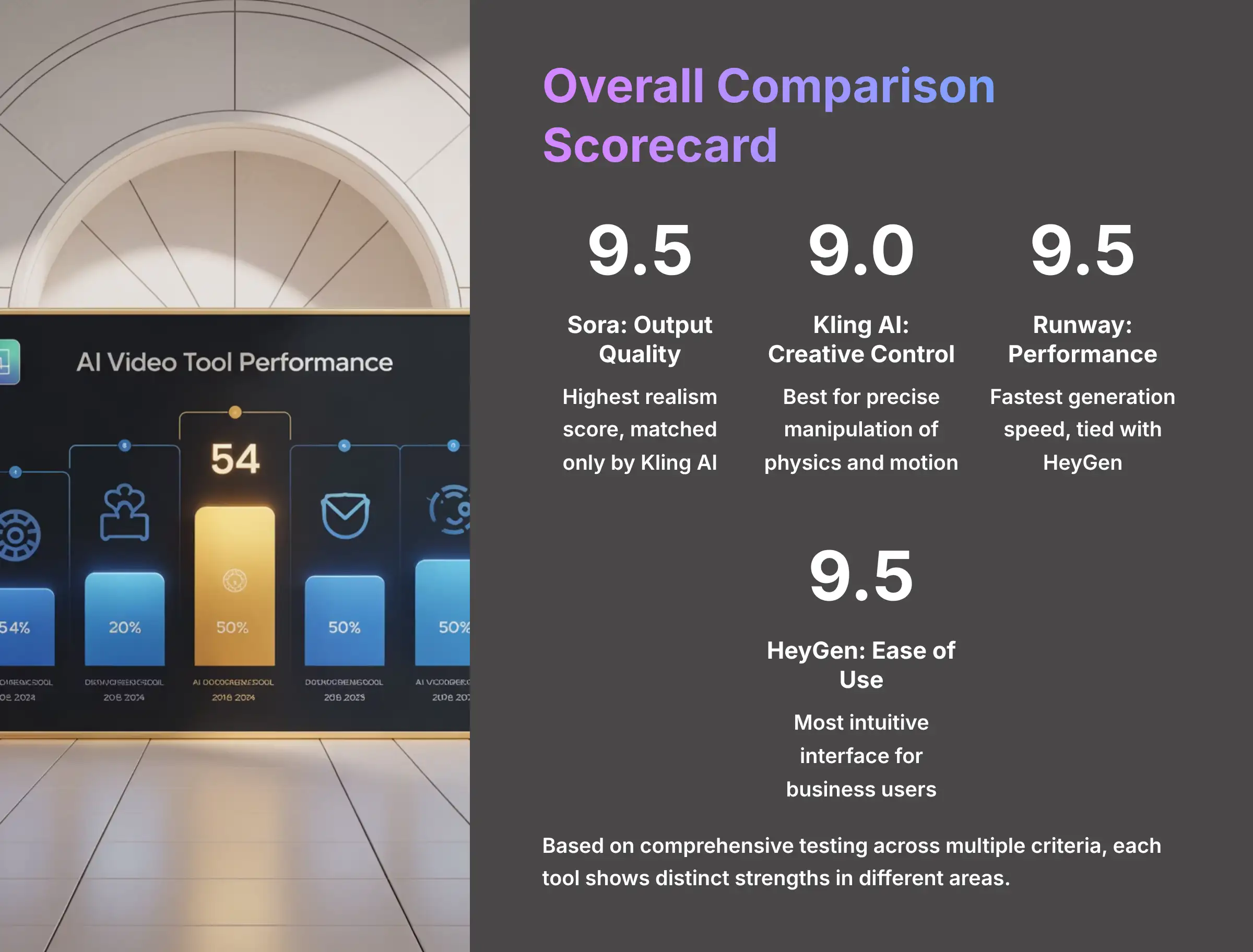

Here is my final scorecard, rating each tool from 1 to 10 based on my comprehensive testing.
| Criteria | Sora | Kling AI | Runway | HeyGen | Pika Labs |
|---|---|---|---|---|---|
| Output Quality & Realism | 9.5 | 9.5 | 8.5 | 7.0 | 8.5 |
| AI Capabilities & Control | 8.0 | 9.0 | 8.5 | 7.5 | 8.0 |
| User Experience (Ease of Use) | 9.0 | 7.0 | 9.0 | 9.5 | 8.5 |
| Performance (Speed) | 7.0 | 5.0 | 9.5 | 9.5 | 8.0 |
| Value Proposition | N/A | N/A | 8.5 | 8.0 | 8.5 |
| Integration & Workflow | 7.5 | 7.0 | 9.5 | 8.5 | 8.0 |
Tool-by-Tool Analysis
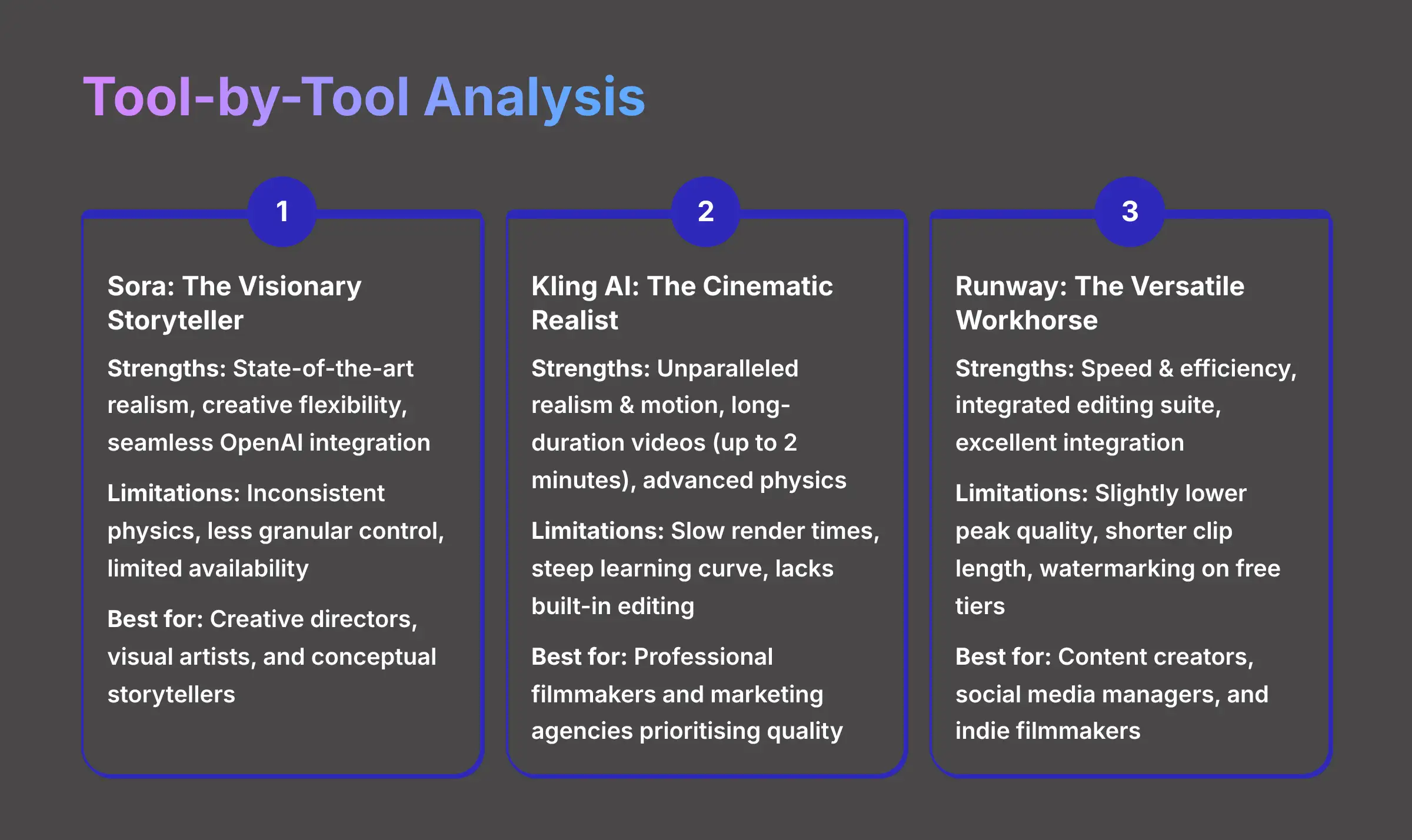

Sora Assessment
Overview
Sora is the visionary storyteller in this group. It's perfect for creating stunning, imaginative visuals that push the boundaries of what you thought AI could do.
Key Strengths
- State-of-the-Art Realism: It produces visuals that are often hard to tell apart from actual camera footage.
- Creative Flexibility: I found it excels at interpreting abstract and complex prompts with amazing results.
- Seamless OpenAI Integration: The workflow is very intuitive if you already use ChatGPT.
Notable Limitations
- Inconsistent Physics: Sometimes objects might not interact as expected in complex scenes.
- Less Granular Control: It offers fewer options for fine-tuning details compared to a tool like Kling AI.
- Limited Availability: It's not yet publicly released and is only available to a select group of testers.
Best-suited User Profiles
Sora is best for creative directors, visual artists, and filmmakers who are focused on conceptual or abstract storytelling.
Expert Tips, Insights & Warnings
You can get much more coherent results by guiding Sora through a narrative sequence in ChatGPT. Don't just give it a single prompt; give it a series of prompts to build out a full scene.
Kling AI Assessment
Overview
Kling AI is the cinematic realist. I recommend it for creating high-fidelity, narrative-driven videos where precise control over motion is key.
Key Strengths
- Unparalleled Realism & Motion: It has best-in-class physics and character dynamics.
- Long-Duration Videos: It supports videos up to 2 minutes long at 1080p resolution.
- Advanced Physics Simulation: Its sophisticated approach to physics allows for precise manipulation of objects and actions.
Notable Limitations
- Slow Render Times: This is the biggest complaint I hear from users and can be a real workflow bottleneck.
- Steep Learning Curve: The interface is powerful but requires an investment of time to master.
- Lacks Built-in Editing: You will need a separate video editor for any post-production work.
Best-suited User Profiles
This tool is for professional filmmakers and marketing agencies who put cinematic quality above everything else.
Expert Tips, Insights & Warnings
Users on professional forums often warn about the long render times. My advice is to plan your workflow around this. Use the free demo to test your prompts before you commit to a full render.
Runway Assessment
Overview
Runway is the versatile workhorse of the bunch. It combines a powerful generation engine with a full creative suite for end-to-end video production.
Key Strengths
- Speed & Efficiency: It has significantly faster generation speeds than many competitors, which is ideal for rapid prototyping.
- Integrated Editing Suite: It has a comprehensive set of tools for post-production right in the app.
- Excellent Integration & Collaboration: A great API, desktop app, and real-time team features set it apart.
Notable Limitations
- Slightly Lower Peak Quality: In some cases, it may not match the absolute best output from Sora or Kling AI.
- Shorter Clip Length: Generation is limited to shorter video segments compared to Kling.
- Watermarking on Free/Lower Tiers: The free plan's watermark can be restrictive for professional use.
Best-suited User Profiles
I recommend Runway for content creators, social media managers, and indie filmmakers who need a fast and flexible workflow.
Expert Tips, Insights & Warnings
You can use Runway's video-to-video feature by using your own video clips as a starting point for the AI. For instance, upload a simple shot of your product and prompt the AI to “change the background to a futuristic neon city.” This is a powerful way to maintain brand consistency by blending generated content with your existing footage.
HeyGen Assessment
Overview
HeyGen is a specialized communication tool. It is designed for creating professional AI avatar videos with amazing speed and scalability.
Key Strengths
- Lifelike AI Avatars & Lip-Sync: The presenters look very convincing and natural.
- Speed and Efficiency: I was able to create videos from scripts in just a few minutes.
- Multilingual Capabilities: It's excellent for localizing marketing or training content for a global audience.
Notable Limitations
- Highly Specialized: This is not a general-purpose creative video generator.
- Limited Creative Control: The focus is on avatar presentations, not generating full, dynamic scenes.
- Customization at Higher Tiers: Custom avatars require more expensive business plans.
Best-suited User Profiles
HeyGen is perfect for corporate trainers, marketers, and businesses that need to produce scalable video content.
Expert Tips, Insights & Warnings
From my own experience, the face-swap feature is surprisingly accurate. It's a great tool for personalizing marketing outreach at scale. Just be sure to use a high-quality source photo for the best results.
Pika Labs Assessment
Overview
Pika Labs has rapidly become a fan-favorite for its blend of high-quality output and powerful, user-friendly features. It directly competes with Runway and Kling AI for the attention of creative professionals.
Key Strengths
- Modify Region Feature: Pika's standout feature allows you to select and regenerate specific parts of a video (e.g., change a character's clothes or add an element to the background) without re-rendering the entire scene.
- Lip Sync & Sound Effects: It includes a surprisingly effective AI-powered lip-sync tool and the ability to generate sound effects to match your video, adding a layer of polish in-platform.
- Strong Community & Rapid Development: Pika has a very active community and a fast development cycle, often releasing new and innovative features ahead of competitors.
Notable Limitations
- Shorter Clip Length: Generation is typically limited to shorter clips, making it better for social media and dynamic shots rather than long narrative scenes.
- Video-First, Not Cinematic-First: While the quality is high, its feature set is geared more towards modifying and enhancing video, whereas a tool like Kling AI is built from the ground up for cinematic motion.
Best-suited User Profiles
Pika is perfect for social media creators, animators, and marketers who need to quickly create, modify, and enhance short-form video content with a high degree of creative control.
Use Case Scenarios: Which Tool Is Right for You?
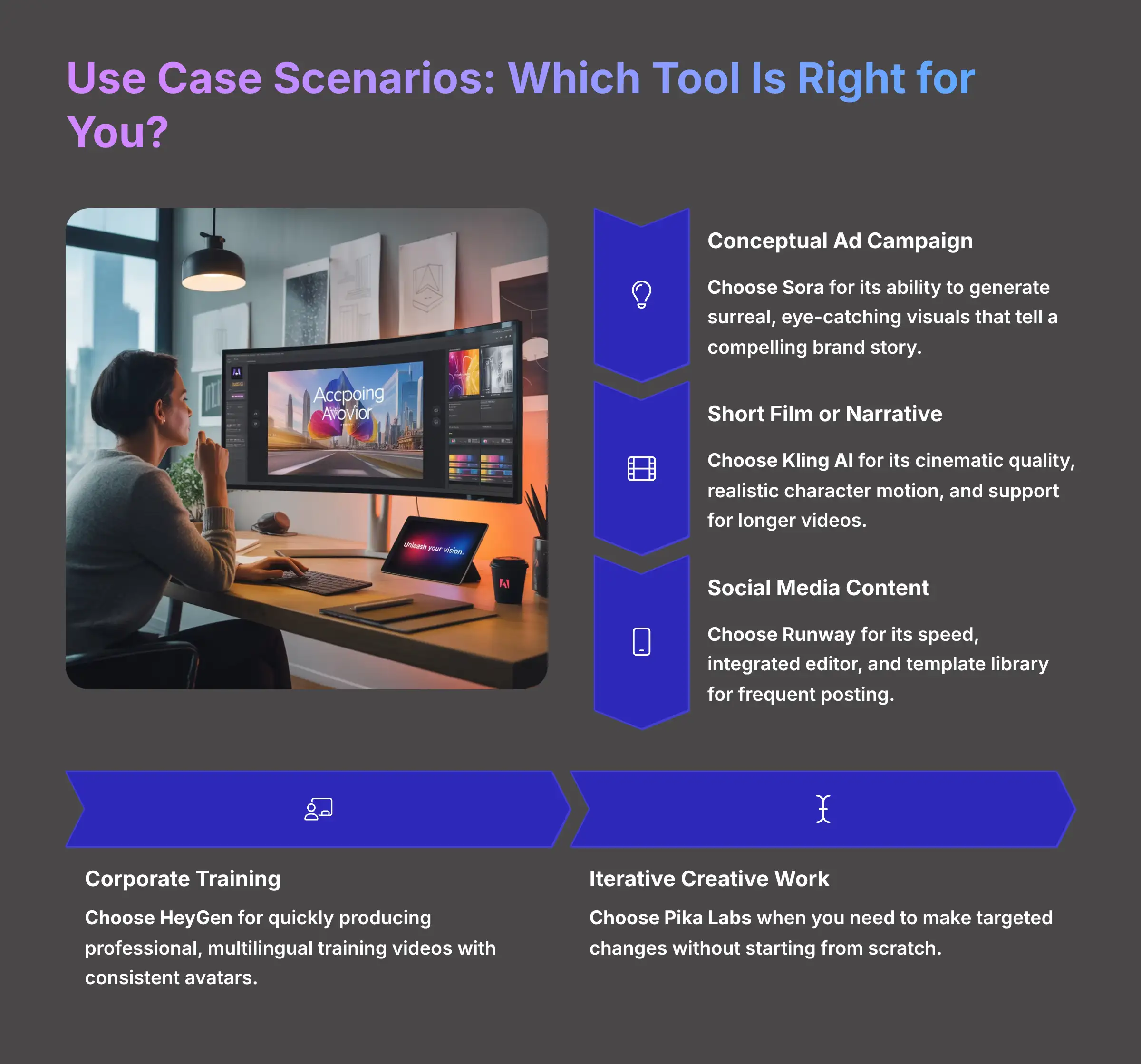

- For a Conceptual Ad Campaign: Sora is the top choice for its ability to generate surreal, eye-catching visuals that tell a compelling story. Its exceptional creative flexibility allows for unique brand narratives that stand out in crowded markets.
- For a Short Film or Narrative Scene: Kling AI is ideal for its cinematic quality, realistic character motion, and support for longer videos. The physics-based approach creates more believable interactions between characters and objects, which is crucial for narrative storytelling.
- For Social Media Content Creation: Runway is the clear winner because of its speed, integrated editor, and huge template library. The ability to quickly iterate through multiple concepts makes it perfect for platforms that require frequent posting and trend-responsive content.
- For Corporate Training Videos: HeyGen is the obvious choice for its ability to quickly produce professional, multilingual training videos at scale. The consistent avatar quality and excellent lip-syncing create a professional appearance that maintains viewer engagement.
- For Iterative Creative Work: Pika Labs shines when you need to make targeted changes to videos without starting from scratch. Its Modify Region feature is perfect for creative directors who need to refine specific elements while preserving the overall composition.
For hands-on learning, explore our comprehensive MagicLight Tutorial: How to Use AI to Enhance Lighting in Your Portraits to understand practical implementation techniques that can be applied across different platforms.
Disclaimer: The information about Best MagicLight Alternatives presented in this article reflects my thorough analysis as of 2025. Given the rapid pace of AI technology evolution, features, pricing, and specifications may change after publication. While I strive for accuracy, I recommend visiting the official website for the most current information. My overview is designed to provide a comprehensive understanding of the tool's capabilities rather than real-time updates.
Final Verdict and Recommendations
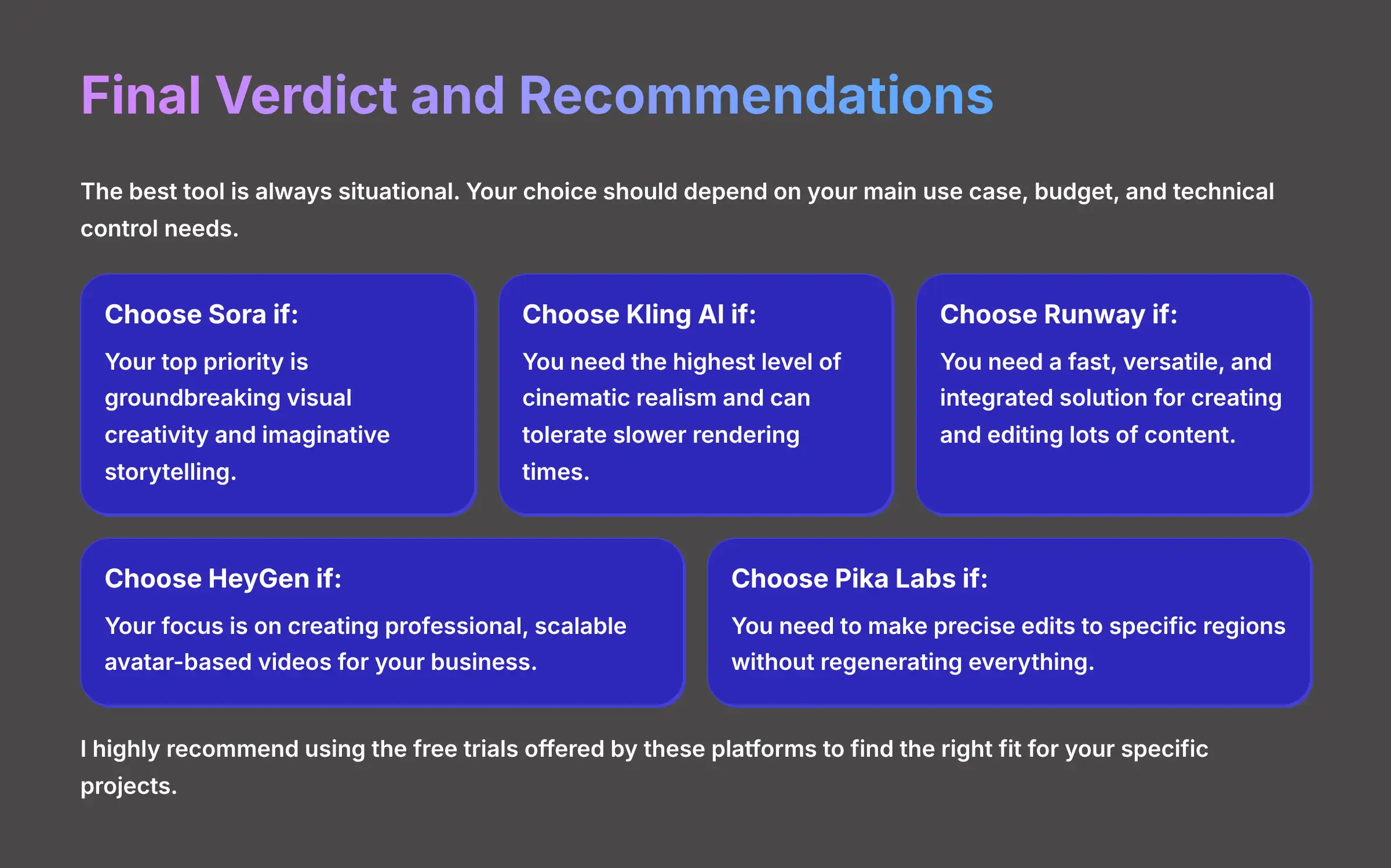

The best tool is always situational, and there is no single winner here. Your choice should depend on your main use case, your budget, and how much technical control you need. My experience shows that the right tool can make a world of difference.
Here are my final recommendations:
- Choose Sora if: Your top priority is groundbreaking visual creativity and imaginative storytelling.
- Choose Kling AI if: You need the highest level of cinematic realism and can tolerate slower rendering times.
- Choose Runway if: You need a fast, versatile, and integrated solution for creating and editing lots of content.
- Choose HeyGen if: Your focus is on creating professional, scalable avatar-based videos for your business.
- Choose Pika Labs if: You need the ability to make precise edits to specific regions of your videos without regenerating everything.
I highly recommend you use the free trials offered by these platforms. Getting hands-on experience with your own projects is the best way to find the right fit. For comprehensive evaluation insights, our detailed MagicLight Review analysis provides additional context for understanding what to look for in AI video tools. I hope this comparison of the Best MagicLight Alternatives helps you on your creative journey.
Frequently Asked Questions About Choosing an AI Video Tool
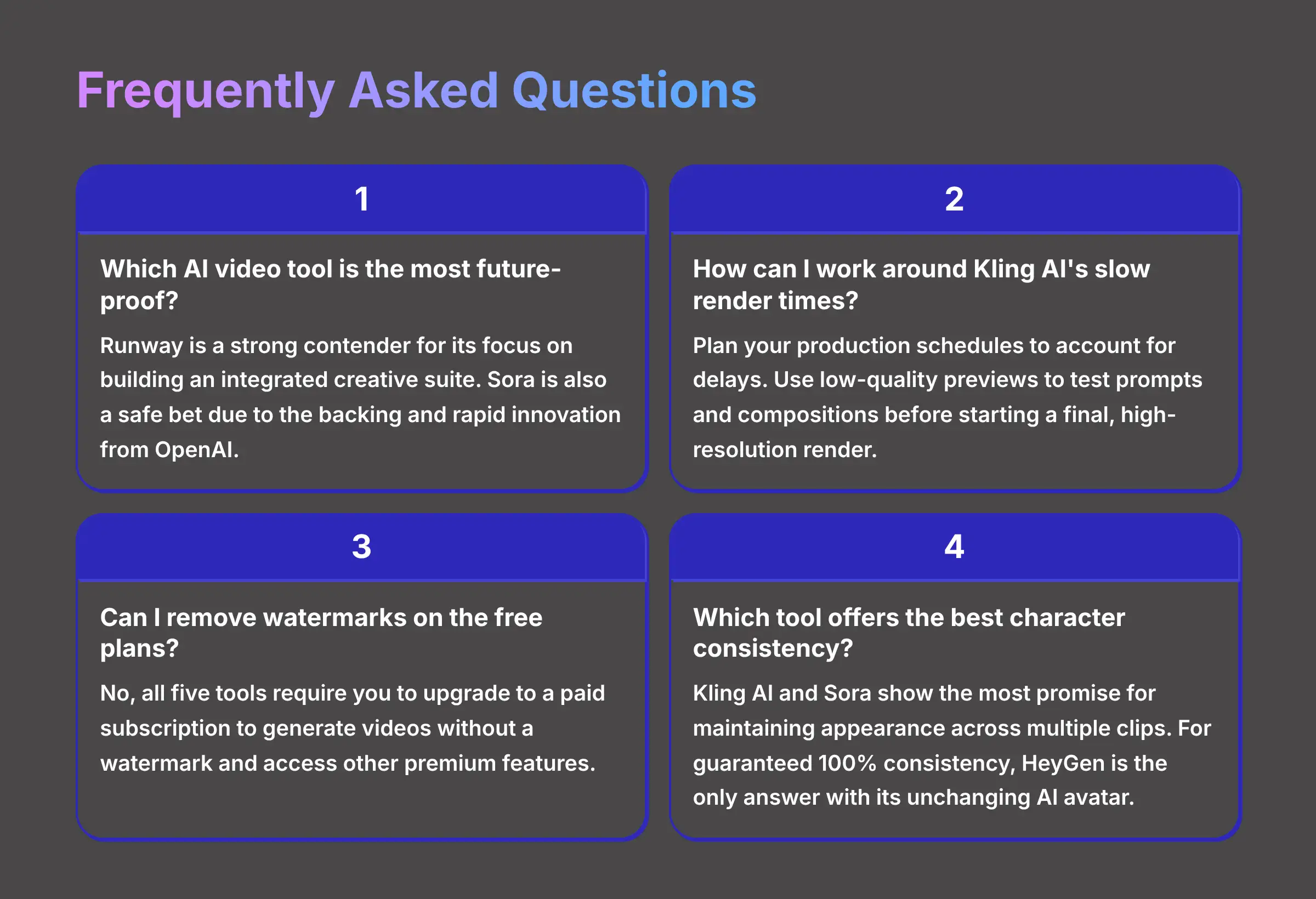

Which AI video tool is the most future-proof?
Runway is a strong contender for its focus on building an integrated creative suite. Sora is also a safe bet due to the backing and rapid innovation from OpenAI.
How can I work around the slow render times of Kling AI?
The best way is to plan your production schedules to account for the delays. You should also use low-quality previews to test your prompts and compositions before starting a final, high-resolution render.
Can I remove the watermarks on the free plans?
No, you cannot remove the watermarks on the free plans. All five of these tools require you to upgrade to a paid subscription to generate videos without a watermark and access other premium features.
Which tool offers the best character consistency for a narrative series?
This is a critical question for filmmakers and storytellers. Currently, Kling AI and Sora show the most promise for maintaining a character's appearance across multiple clips generated from a continuous narrative prompt. Kling's physics-based model helps it “remember” spatial and character details. However, for guaranteed 100% consistency, HeyGen is the only answer, as its entire model is built around a single, unchanging AI avatar. Tools like Pika Labs and Runway offer features like “Modify Region” that can help fix consistency errors in post-production.
For common troubleshooting and additional insights, check out our comprehensive MagicLight FAQs : Common Questions and Answers section, which addresses many similar concerns that apply to AI video tools in general.

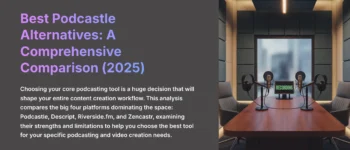
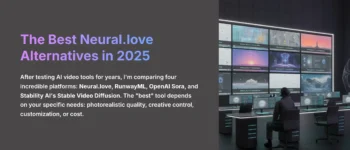
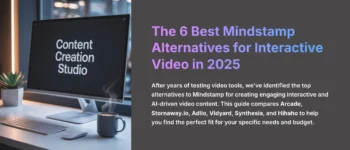
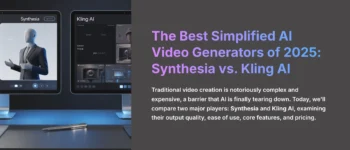
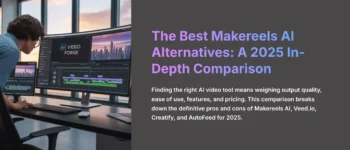

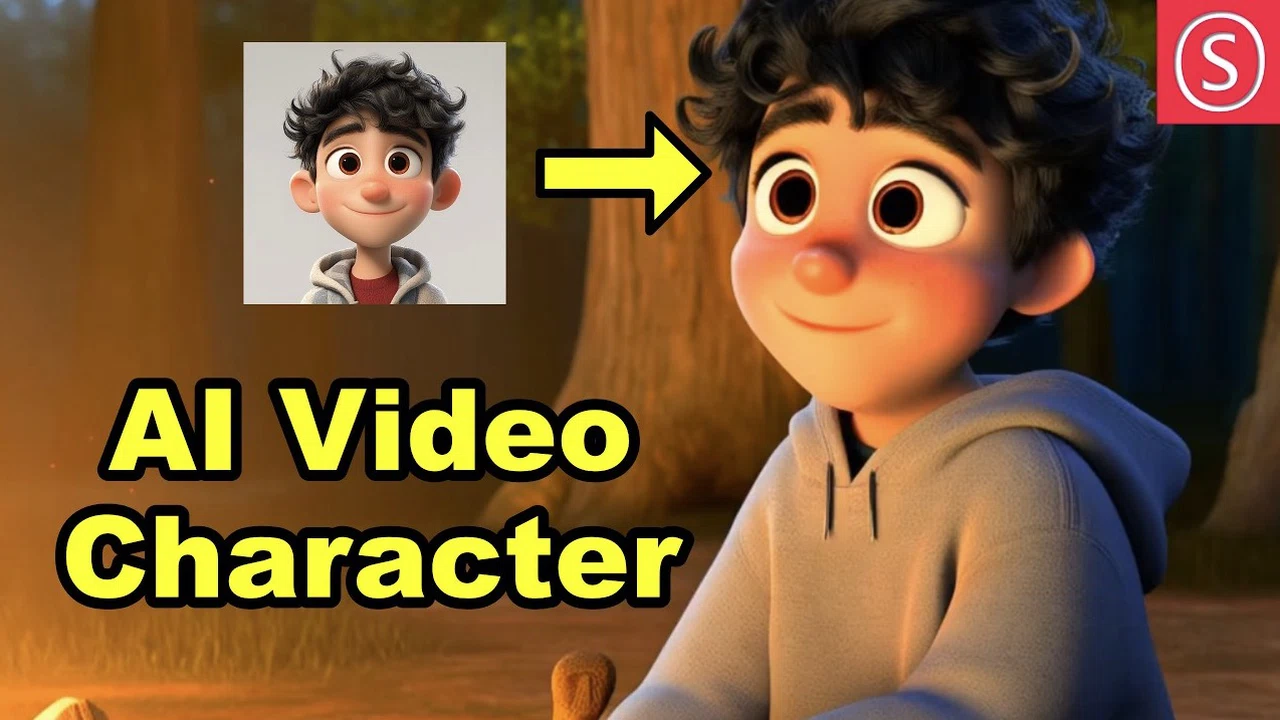

Leave a Reply